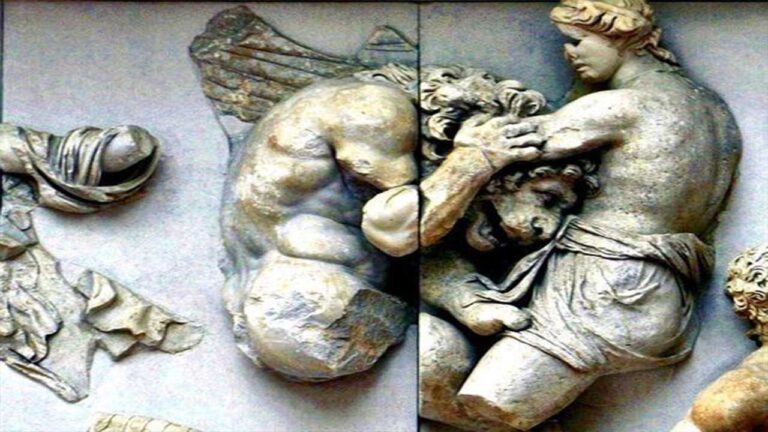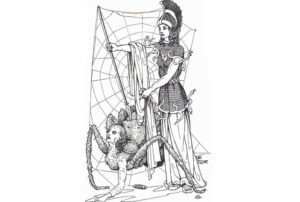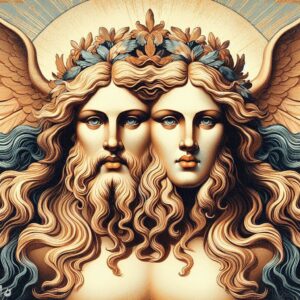Table of Contents
Aether, in ancient Greek cosmology, represents the personification of the upper air or celestial atmosphere. It was considered a divine substance, associated with the heavens and pure air, often depicted as a radiant element in the cosmos. In later scientific contexts, the term “aether” was used to describe a hypothetical medium believed to fill space for the transmission of electromagnetic waves.
Origin
The concept of Aether has ancient origins in Greek cosmology, where it was regarded as a divine substance representing the upper air or celestial realm. The term has roots in Greek mythology and philosophy, with thinkers like Aristotle incorporating it into their understanding of the cosmos. In later centuries, the idea of aether evolved, taking on different meanings in various scientific and philosophical contexts, including its association with light and electromagnetism. While modern physics has largely moved away from the notion of aether as a substance, its historical and conceptual roots remain influential.
Family
In the context of ancient Greek cosmology and mythology, Aether (or Aither) is often personified as a primordial deity representing the pure upper air or the sky. Aether is considered one of the cosmic elements alongside Earth, Air, Fire, and Water.
In some traditions, Aether is depicted as the son of Erebus (Darkness) and Nyx (Night), making him a sibling to other primordial deities like Hemera (Day), Gaea (Earth), and Tartarus (Underworld). These primordial beings embody fundamental aspects of the cosmos in Greek cosmogony.
It’s important to note that the concept of Aether as a deity is more prevalent in poetic and philosophical interpretations rather than in explicit narratives or stories. The family relationships among these primordial deities are not universally consistent across all ancient Greek sources. The genealogy and relationships of these cosmic entities can vary in different mythological traditions and philosophical writings.
Historical Influence
Aether, in ancient Greek cosmology, played a significant role in early philosophical and scientific thought. The concept of Aether evolved over time and had notable influence in the following areas:
Philosophy:
Pre-Socratic Philosophers: Philosophers such as Anaximenes considered Aether as one of the fundamental elements, alongside Earth, Air, Fire, and Water, attempting to understand the nature of the cosmos.
Science:
Aristotelian Cosmology: Aristotle incorporated Aether into his cosmological model, describing it as the celestial substance that made up the heavens. According to Aristotle, Aether had circular motion and was incorruptible, unlike the earthly elements.
Medieval Science: The concept of Aether persisted in medieval cosmology, especially in the context of the geocentric model. The celestial spheres were thought to be composed of Aether, maintaining perfect circular motion.
Literature and Poetry:
Hesiod’s Theogony: Aether is mentioned in Hesiod’s “Theogony,” providing a poetic and mythic context to the primordial deities and their cosmic roles.
Ovid’s Metamorphoses: Aether appears in Ovid’s work as a deity associated with the upper regions of the sky, contributing to the poetical interpretation of the natural world.
Symbolic and Cultural Impact:
Symbol of Purity: Aether was often associated with purity and the divine. Its incorruptible nature and celestial connection made it a symbol of the divine realm.
Cosmic Harmony: The inclusion of Aether in cosmological models symbolized an attempt to explain the order and harmony of the cosmos, contributing to the broader cultural understanding of the universe.
While the concept of Aether as a cosmic element eventually gave way to more nuanced scientific models, its historical influence on early philosophical and cosmological thinking is evident in the development of ideas about the nature of the cosmos.
FAQ
What is Aether?
In ancient Greek cosmology, Aether represents the personification of the upper air or celestial atmosphere. It was considered a divine substance associated with the heavens and pure air.
What does Aether mean?
The term "aether" has ancient origins and, in various contexts, refers to a divine substance representing the upper air or celestial realm.




